
When one country’s cuisine finds its way overseas, things are often lost in translation, either due to the limited availability of certain ingredients or because of differences in local tastes. Japan is just as guilty as any country for offering “foreign” foods that would never be found in the countries they originated from, but Japanese food has not escaped the same type of butchering, as the likes of sushi and ramen gain popularity around the world.
Just as any American is likely to be surprised by some of the things Denny’s and McDonald’s in Japan have on offer, one of RocketNews24’s Japanese writers got a bit of a surprise when he checked the menu at a sushi restaurant in the Netherlands.
Ask anyone what comes to their mind when they think of Japanese food, and sushi is likely to be at the top of the list. Japanese restaurants have seen a rather large boom in the west in recent years, with sushi in particular gaining most of the popularity. But most of the sushi you’re likely to find are things the Japanese people would never even recognize as sushi, like those creative inside-out caterpillar or California rolls you may be so fond of.
During a recent visit to the Netherlands, RocketNews24’s writer Yuichirou braved a foreign sushi restaurant to try their fare, and was quite baffled at what showed up on the menu.
Tofu sushi? He read the words again. Yes, this really was sushi with a topping, or neta, not of fish, vegetables, or even rolled egg, but bean curd. Yuichirou was seriously weirded out by the very thought of such a creation.
Tofu has been widely available in western grocery markets for years, and is either known as that life-saving flavor-chameleon meat replacer, or that bland white squishy blob of stuff, depending largely on how you were first introduced to it. While sushi can appear in many forms, in Japan the type most commonly found is nigirizushi, which is simply a slice of raw fish resting atop a bite-sized mound of rice.
▼Not fond of raw? You can also find things like broiled salmon or sweet omelet
So, when Yuichirou found tofu sushi on the menu, he had visions of a sliver of some bland, white bean curd served on top of sushi rice. Still, for the sake of investigative journalism, he ordered a plate and waited for it to arrive. How pleasantly surprised he was, then, when it arrived and he saw that “tofu sushi” was in fact a type of sushi he was rather familiar with after all. Sushi lovers, can you guess what it is?
It was, in fact…
…
…
…
…inarizushi! Although served a bit differently than it is normally, the combination of vinegary sushi rice and the sweetened pockets of aburaage, or fried tofu skins, was the same.
▼You’ll typically find the rice stuffed inside the the tofu skins.
Among the choices the restaurant offered were inside-out rolls that westerners are probably more familiar with…
▼The “beef roll”, though sprinkled with shichimi spice, is still mild enough for the average Japanese palette.
▼The “deep fried shrimp”, wrapped with avocado and covered on the outside with tobikko, or flying fish roe.
▼A spicy tuna roll. That sauce definitely marks it as a foreign creation!
▼The “Sumo roll”, aptly named for its size, is somewhat reminiscent of the Japanese futomaki roll
▼Though you’d be very hard pressed to find cream cheese making an appearance in any sushi in Japan, our Yuichirou was rather fond of this “salmon cream cheese” roll. Having lived in the Northwestern United States and eaten my fair share of Seattle rolls, I can personally vouch for their deliciousness as well.
But our man also found that the restaurant served a healthy selection of the more traditional fare that the Japanese think of when it comes to sushi.
▼”We likes it rrrraw, and wrrrriggling!”
▼During the restaurant’s lunchtime hours, you can eat your fill for 18.5 euros (USD$20.60)
Delicious eats aside, probably the best part of Yuichirou’s foreign sushi experience was the fact that he got to enjoy some inari – a slang term that can be used to refer to a man’s testes – in the town of Scheveningen, which, due to the phonetic limitations of the Japanese language, often gets mispronounced as “Sukebeningen” (スケベニンゲン), meaning “perverted person”. Doesn’t get more grade school than that!
Restaurant details
Sumo Sushi & Grill Restaurant
Address: Palacestraat 8, 2586 HX Scheveningen, Netherlands
Hours: 12pm – 10pm
Photos © RocketNews24
[ Read in Japanese ]

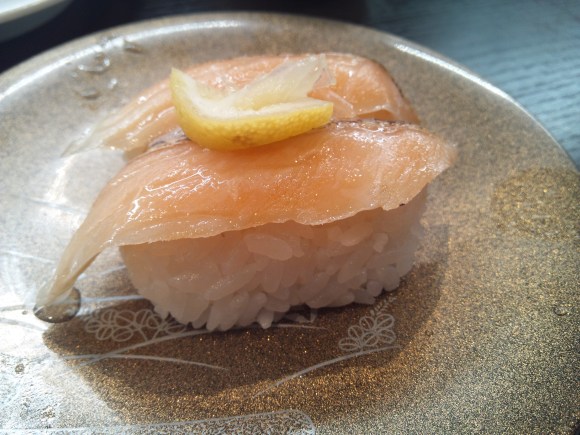
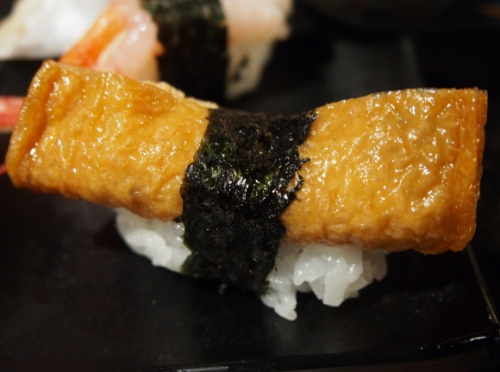
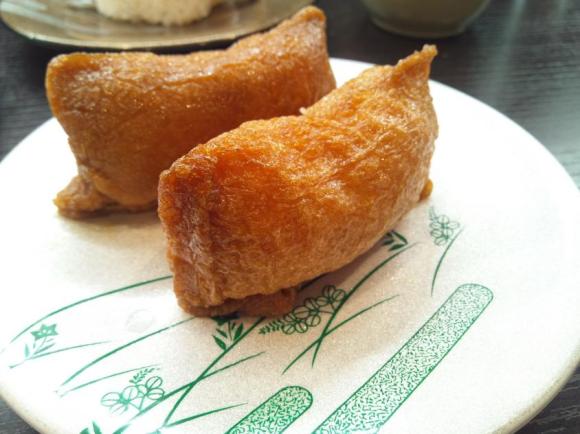
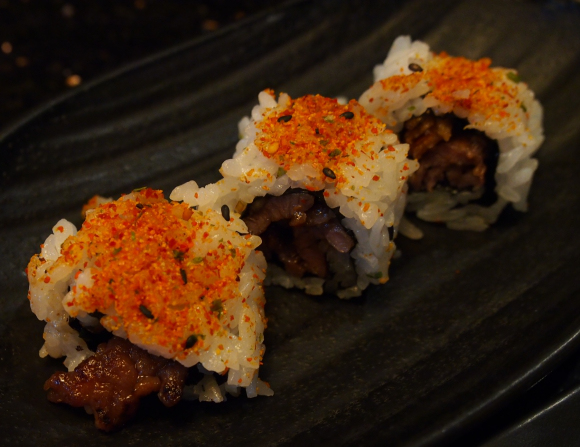
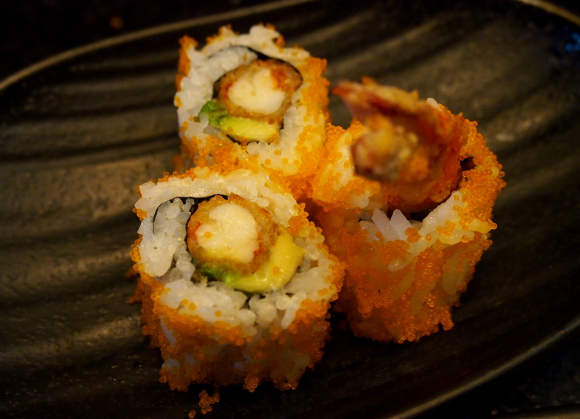

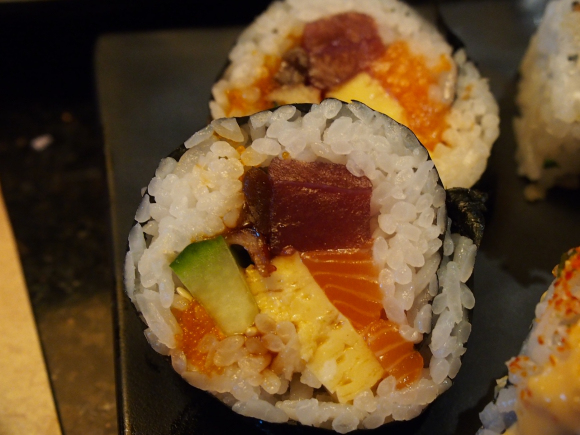
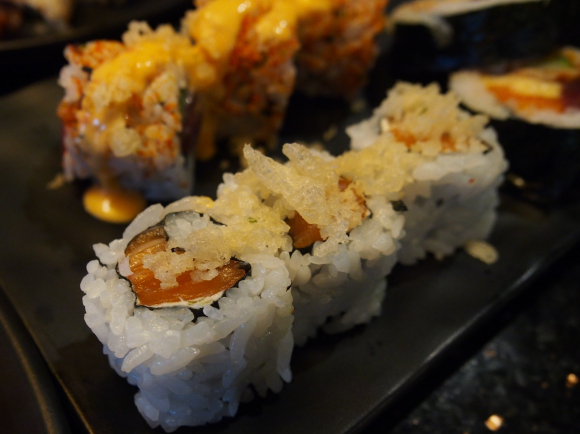
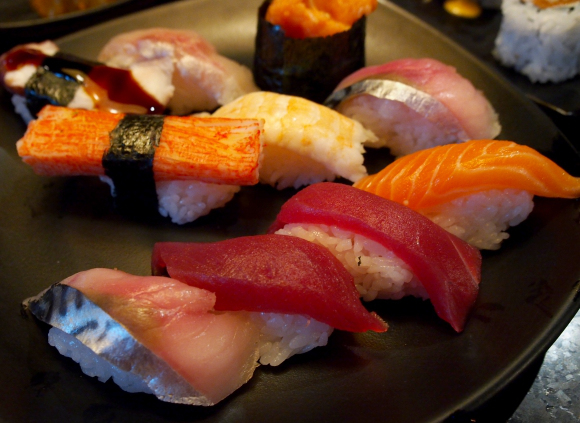
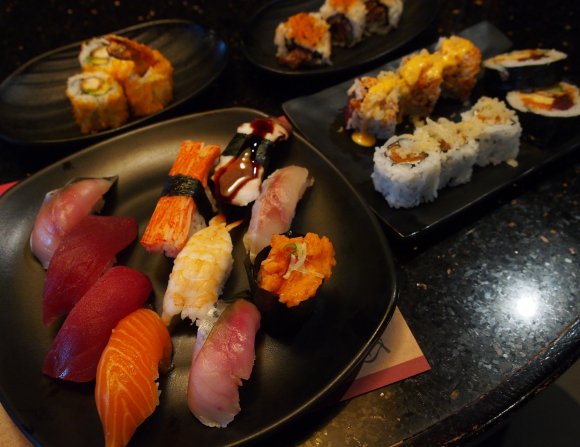
 You call that sushi? Ukraine’s take on the Japanese classic
You call that sushi? Ukraine’s take on the Japanese classic Our Japanese language reporter visits a U.K. sushi chain, is blown away by its original “sushi”
Our Japanese language reporter visits a U.K. sushi chain, is blown away by its original “sushi” Our Japanese-language writers taste and compare sushi from around the world
Our Japanese-language writers taste and compare sushi from around the world We visit Palau and declare it the second best country for sushi in the world
We visit Palau and declare it the second best country for sushi in the world Our Japanese-born reporter gets some culture shock at Mexico City’s most popular sushi chain
Our Japanese-born reporter gets some culture shock at Mexico City’s most popular sushi chain Akiyuki Nosaka, celebrated author of Grave of the Fireflies, passes away
Akiyuki Nosaka, celebrated author of Grave of the Fireflies, passes away That time Seiji called JASRAC to ask why he didn’t get paid royalties for his song being on TV
That time Seiji called JASRAC to ask why he didn’t get paid royalties for his song being on TV Hayao Miyazaki says Happy New Year to Studio Ghibli fans with new art for Year of the Horse
Hayao Miyazaki says Happy New Year to Studio Ghibli fans with new art for Year of the Horse 7 great places to see Mt. Fuji from without having to climb it
7 great places to see Mt. Fuji from without having to climb it Draw like a Studio Ghibli anime artist with exclusive watercolour set approved by Hayao Miyazaki
Draw like a Studio Ghibli anime artist with exclusive watercolour set approved by Hayao Miyazaki We found possibly the quietest Japanese-style hotel in Tokyo’s bustling Shinjuku district
We found possibly the quietest Japanese-style hotel in Tokyo’s bustling Shinjuku district Nattoku! Factory offers free factory tours of a famous natto brand production process
Nattoku! Factory offers free factory tours of a famous natto brand production process A deep-fried sushi senbero awaits from Super Value【Japan’s Best Home Senbero】
A deep-fried sushi senbero awaits from Super Value【Japan’s Best Home Senbero】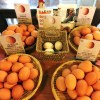 We try all-you-can-eat raw eggs for 730 yen, turns out to be way better than it sounds
We try all-you-can-eat raw eggs for 730 yen, turns out to be way better than it sounds Usher good luck into your home this New Year with Totoro tenugui from Studio Ghibli
Usher good luck into your home this New Year with Totoro tenugui from Studio Ghibli Starbucks Japan ready to get Year of the Horse started with adorable drinkware and plushies【Pics】
Starbucks Japan ready to get Year of the Horse started with adorable drinkware and plushies【Pics】 Cyberpunk anime meets traditional culture in Ghost in the Shell gold leaf Japanese changing screens
Cyberpunk anime meets traditional culture in Ghost in the Shell gold leaf Japanese changing screens Hello Kitty Choco Egg figures are an adorable trip through three periods of Japanese pop culture【Pics】
Hello Kitty Choco Egg figures are an adorable trip through three periods of Japanese pop culture【Pics】 7-Eleven Japan’s ramen-cooking robot whipped us up a bowl of noodles【Taste test】
7-Eleven Japan’s ramen-cooking robot whipped us up a bowl of noodles【Taste test】 Japan’s otoshidama tradition of giving kids money at New Year’s gets a social welfare upgrade
Japan’s otoshidama tradition of giving kids money at New Year’s gets a social welfare upgrade Sumo Sanrio! Hello Kitty and pals team up with Japan Sumo Association for new merch【Pics】
Sumo Sanrio! Hello Kitty and pals team up with Japan Sumo Association for new merch【Pics】 More Than a Capsule Stay: Why Solo Travelers Choose “global cabin Yokohama Chinatown”
More Than a Capsule Stay: Why Solo Travelers Choose “global cabin Yokohama Chinatown” Japan’s oldest largetooth sawfish in captivity back on display in Mie Prefecture
Japan’s oldest largetooth sawfish in captivity back on display in Mie Prefecture 7-Eleven Japan starts new temporary luggage storage service in over 300 branches
7-Eleven Japan starts new temporary luggage storage service in over 300 branches Disillusionment at Tsukiji’s tourist-target prices led us to a great ramen restaurant in Tokyo
Disillusionment at Tsukiji’s tourist-target prices led us to a great ramen restaurant in Tokyo Starbucks teams up with 166-year-old Kyoto doll maker for Year of the Horse decorations【Photos】
Starbucks teams up with 166-year-old Kyoto doll maker for Year of the Horse decorations【Photos】 Tokyo considering law requiring more trash cans following litter increase in heavily touristed area
Tokyo considering law requiring more trash cans following litter increase in heavily touristed area Tokyo’s Tsukiji sushi neighborhood asks tour groups to stay away for the rest of the month
Tokyo’s Tsukiji sushi neighborhood asks tour groups to stay away for the rest of the month Tokyo event lets you travel back in time, for free, to celebrate 100 years since Showa era start
Tokyo event lets you travel back in time, for free, to celebrate 100 years since Showa era start Sanrio theme park in Japan announces plans to expand into a Sanrio resort
Sanrio theme park in Japan announces plans to expand into a Sanrio resort Japan may add Japanese language proficiency, lifestyle classes to permanent foreign resident requirements
Japan may add Japanese language proficiency, lifestyle classes to permanent foreign resident requirements Stamina-destroying “Paralysis Noodles” are Tokyo’s newest over-the-top ramen innovation
Stamina-destroying “Paralysis Noodles” are Tokyo’s newest over-the-top ramen innovation Survey asks foreign tourists what bothered them in Japan, more than half gave same answer
Survey asks foreign tourists what bothered them in Japan, more than half gave same answer Japan’s human washing machines will go on sale to general public, demos to be held in Tokyo
Japan’s human washing machines will go on sale to general public, demos to be held in Tokyo Japan’s deadliest food claims more victims, but why do people keep eating it for New Year’s?
Japan’s deadliest food claims more victims, but why do people keep eating it for New Year’s? We deeply regret going into this tunnel on our walk in the mountains of Japan
We deeply regret going into this tunnel on our walk in the mountains of Japan Studio Ghibli releases Kodama forest spirits from Princess Mononoke to light up your home
Studio Ghibli releases Kodama forest spirits from Princess Mononoke to light up your home Major Japanese hotel chain says reservations via overseas booking sites may not be valid
Major Japanese hotel chain says reservations via overseas booking sites may not be valid Put sesame oil in your coffee? Japanese maker says it’s the best way to start your day【Taste test】
Put sesame oil in your coffee? Japanese maker says it’s the best way to start your day【Taste test】 No more using real katana for tourism activities, Japan’s National Police Agency says
No more using real katana for tourism activities, Japan’s National Police Agency says Starbucks Japan reveals new sakura drinkware collection, inspired by evening cherry blossoms
Starbucks Japan reveals new sakura drinkware collection, inspired by evening cherry blossoms Updated cherry blossom forecast shows extra-long sakura season for Japan this year
Updated cherry blossom forecast shows extra-long sakura season for Japan this year Celebrating washoku and rice — an evening with master chefs and sushi roll creators (Part 1)
Celebrating washoku and rice — an evening with master chefs and sushi roll creators (Part 1) Our Japanese reporter visits an American sushi restaurant in Japan
Our Japanese reporter visits an American sushi restaurant in Japan Dutch restaurant’s odd ramen with soybeans has one ingredient we didn’t expect, lacks one we did
Dutch restaurant’s odd ramen with soybeans has one ingredient we didn’t expect, lacks one we did Our writer tries out Hong Kong’s ‘killer sushi’, lives to tell the tale
Our writer tries out Hong Kong’s ‘killer sushi’, lives to tell the tale A wild sushi chase: Our Japanese reporter tries Cuban sushi in a five-star Havana hotel
A wild sushi chase: Our Japanese reporter tries Cuban sushi in a five-star Havana hotel We tried Akihabara’s Star Kebab sushi roll and it changed our world
We tried Akihabara’s Star Kebab sushi roll and it changed our world We sample the deep sea fish and more at this delectable sushi restaurant in Shizuoka Prefecture
We sample the deep sea fish and more at this delectable sushi restaurant in Shizuoka Prefecture Sushi hot dogs and burgers on the menu at Japanese sushi restaurant【Taste Test】
Sushi hot dogs and burgers on the menu at Japanese sushi restaurant【Taste Test】 An Italian take on a Japanese classic, but do people in Japan consider it sushi?
An Italian take on a Japanese classic, but do people in Japan consider it sushi? Egyptian restaurant Sumo Sushi offers our Japanese reporter a delightful yet quirky lunch
Egyptian restaurant Sumo Sushi offers our Japanese reporter a delightful yet quirky lunch Our Japanese language reporter visits Barcelona, decides to try Spanish “hosho maki” sushi
Our Japanese language reporter visits Barcelona, decides to try Spanish “hosho maki” sushi Takoyaki sushi rolls at popular Japanese chain take California rolls to a whole new level
Takoyaki sushi rolls at popular Japanese chain take California rolls to a whole new level We rent Kappa Sushi’s conveyor belt, turn our home into a kaitenzushi restaurant
We rent Kappa Sushi’s conveyor belt, turn our home into a kaitenzushi restaurant Our Japanese correspondent tries sushi in San Diego and falls in love with the authentic flavor
Our Japanese correspondent tries sushi in San Diego and falls in love with the authentic flavor Horsemeat sushi: For when you’re tired of spicy tuna and California rolls
Horsemeat sushi: For when you’re tired of spicy tuna and California rolls
Leave a Reply